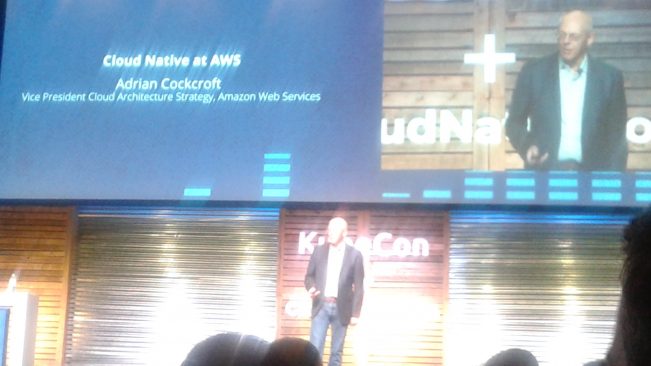The role of Kubernetes in AWS
Austin, Texas — Pay-as-you-go, self-service, global distribution and high utilization — those are the principles that undergird cloud native, noted Adrian Cockcroft, vice president of cloud architecture strategy at AWS, during a keynote presentation at this year’s KubeCon + CloudNativeCon. Over the course of the talk, Cockcroft touched on a string of announcements made by the company, as well as how AWS is supporting Kubernetes.
Cockcroft proceeded by highlighting how its open source AWS team is trying to grow communications, improve code and increase contribution. As part of this initiative, the company recently joined the Cloud Native Computing Foundation (CNCF) as a platinum member, working to integrate both CNCF components and Kubernetes into AWS.
Cloud native refers to a specific approach to creating and deploying applications based on infrastructure-as-a-service with a mix of operational tools and services, including continuous integration, container engines and orchestrators. The CNCF hosts the Container Networking Interface (CNI) project, which consists of specifications and libraries for writings plugins and configuring network interfaces in Linux containers, according to the organization. Cockcroft said the company expects CNI to serve as the basis for container-based networking on AWS.
Cockcroft also discussed a new service recently released by the company dubbed AWS Fargate, which allows users to run containers regardless of the underlying infrastructure. Specifically, it is a web service that provides compute capacity in the cloud, but with a container rather than a virtual machine.
“Fargate is a result in us looking at all the different things you want to do with the cloud,” Crockcosft said. “If you started by saying, okay, I have these instances, these machine instances which are virtual machines, and you natively know how to manage those on AWS. And then we came out with Lambda, so now we have functions which can be cloud natively managed by AWS. Containers were branded inside the instance. What Fargate does is it says a container is a native thing.”
Another recent announcement Cockcroft talked about was the launch of bare metal instances on its EC2 service on AWS. With bare metal, users can directly access hardware and hardware resources without major overhead. It also enables AWS users to run their virtualized stacks, giving them more control over their cloud servers, according to the company. “You can even bring your own hypervisor, or if you wanted to, you could deploy everyone on bare metal,” Cockcroft said.
In order to keep Kubernetes an open source experience, Cockcroft said everything AWS does will be upstream. The company is currently involved in various open source projects, communities and foundations to push additional contributions made by AWS engineers. “These are the projects that are out there that we want to work with these contributors to make them production ready,” he said.

